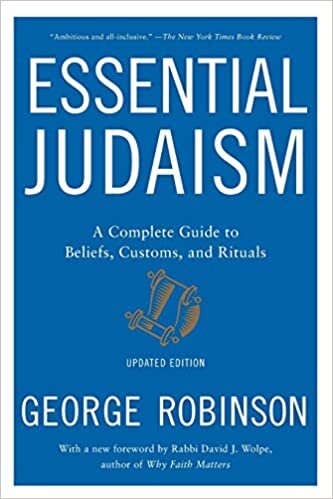
Judaism
Explore Judaism
WHAT IS JUDAISM?
Judaism is a monotheistic faith (belief in One God) that started with Abraham the Prophet almost 5800 years ago and is based on oral and written teachings. The premier sacred text of Judaism, the Torah (“Instruction” ), tells the story of creation of the universe, history of the Jewish people and provides the guidelines, laws and practices observed today. It is divided into the 5 Books of Moses (Genesis, Exodus, Leviticus, Numbers and Deuteronomy). These books are broken down into 54 Parshas - one read every week during Shabbat over the course of one Jewish Year. Another central cornerstone of Judaism is the observance of Kosher dietary laws Kosher. It prohibits the pairing of meat and dairy, and only specific mammals, fish, fowl and cuts are allowed and animals must be slaughtered by a shochet (person trained and certified to butcher animals according to Jewish law)
WHERE DID JUDAISM ORIGINATE?
Judaism grew out of a covenant between God, Abraham, his children and their descendants more than 5,700 years ago. One of the most notable was Moses who led the Hebrew slaves out of Egypt, received the Ten Commandments and teachings from God, giving birth to the Jewish people. They were chosen to observe specific obligations and responsibilities and were charged with the mission to be a light unto the nations of the world, practice tikkun olam by repairing the world and to exemplify the covenant with God as described in the Torah. This view, however, did not preclude a belief that God has a relationship with other peoples – rather, Judaism held that God had entered into a covenant with all humankind, and that Jews and non-Jews alike have a relationship with God, each nation with its own unique relationship with God.
HOW TO PRACTICE JUDAISM
Many religious traditions believe marriage is a gift from God and family life a blessing. Raising a family is a sacred duty to Jewish people, a way to express loyalty to Judaism
Central to Jewish life is marriage and family where they are considered to be a sacred duty and a gift from God. Another centerpiece is the weekly holiday (holy day), of Shabbat. The 25-hour observance begins just before sundown on Fridays and goes through sunset Saturday, It is a day of rest, pleasure, joy, festive meals, singing, gatherings of family and friends and the complete cessation of labor. God commanded the Jewish people to observe Shabbat and keep it holy as the fourth of the Ten Commandments.
In addition to education, justice, charity, obedience, Torah and God, one of the central beliefs is Tikkun Olam which translates as “Repair” or “Mend” and refers to any activity that improves the world, humanity and future generations by bringing it closer to the perfect and harmonious state for which it was created. These acts are an opportunity for individuals to take ownership and be God-like by positively participating in creation through social action, volunteer projects, philanthropy and justice to restore holiness.
Jews around the world affix a Mezuzah to the doorposts of their homes. It consists of a small scroll of parchment (k’laf ) on which are written two biblical passages. The scroll is inserted into a wooden, plastic, or metal casing and affixed to the doorpost at the entrance to a Jewish home. The mezuzah serves two functions: it reminds the occupants when they leave and enter that they have a covenant with God and should conduct themselves accordingly. It also distinguishes the dwelling as a holy place that observes a special set of beliefs and rituals.
Passover is one of the most sacred and widely observed of the Jewish holidays. It is the eight-day festival celebrated from the 15th to the 22nd of the Hebrew month of Nissan. It commemorates the emancipation of the Israelites from slavery in ancient Egypt and marks the beginning of the Jewish nation on Mt. Sinai. There are several rituals that occur during Passover: Reading of the Haggadah, the festive meal/home service called the Seder ,(“order), deep cleaning in order to remove all leavened food (chametz) from the home for the duration of the holiday and the eating of symbolic matzah. Also central to the Seder is the asking of the Four Questions (usually done by the youngest children) and the Seder Plate with items that represent the story of the Exodus. The retelling of this event that celebrates freedom is important so that each generation may learn and remember the story that is so central to Jewish life and history.
Aliyah - Translates as “Ascent” or “Going Up” and is used to describe the honor of being called up to the Bimah (elevated platform where the Torah is read) to recite a blessing over the Parsha. It is also the word used when one moves permanently to the Land of Israel. As far back as biblical times, going to Israel was referred to as “going up”.
WHY PRACTICE JUDAISM?
Judaism is more than a religion; it is culture and Way of Life based on observing specific beliefs and taking positive action. As many believe the Torah expresses the Will of God, by living according to the commandments, they connect with God and achieve fulfillment.
Judaism Resources
Judaism Podcasts
Judaism Videos
Judaism Books
Areyh Kaplan | Jewish Meditation is a step-by-step introduction to meditation and the Jewish practice of meditation in particular. This practical guide covers such topics as mantra meditation, contemplation, and visualization within a Jewish context. It shows us how to use meditative techniques to enhance prayer using the traditional liturgy—the Amidah and the Shema. Through simple exercises and clear explanations of theory, Rabbi Kaplan gives us the tools to develop our spiritual potential through an authentically Jewish meditative practice.
George Robinson | You’ll find everything you need to know about being Jewish in this indispensable, revised and updated guide to the religious traditions, everyday practices, philosophical beliefs, and historical foundations of Judaism.
Anita Diamant | Living a Jewish Life describes Judaism as not just a contemplative or abstract system of thought but as a blueprint for living fully and honorably. This new edition builds on the classic guide, which has been a favorite among Jewish educators and students for years. Enriched with additional resources, including online resources, this updated guide also references recent changes in the modern Jewish community, and has served as a resource and guide.
Viktor Frankl | This seminal book, which has been called “one of the outstanding contributions to psychological thought” by Carl Rogers and “one of the great books of our time” by Harold Kushner, has been translated into more than fifty languages and sold over sixteen million copies. “An enduring work of survival literature,” according to the New York Times, Viktor Frankl’s riveting account of his time in the Nazi concentration camps, and his insightful exploration of the human will to find meaning in spite of the worst adversity, has offered solace and guidance to generations of readers since it was first published in 1946. At the heart of Frankl’s theory of logotherapy (from the Greek word for “meaning”) is a conviction that the primary human drive is not pleasure, as Freud maintained, but rather the discovery and pursuit of what the individual finds meaningful. Today, as new generations face new challenges and an ever more complex and uncertain world, Frankl’s classic work continues to inspire us all to find significance in the very act of living, in spite of all obstacles.
Abraham Joshua Heschel | Elegant, passionate, and filled with the love of God's creation, Abraham Joshua Heschel's The Sabbath has been hailed as a classic of Jewish spirituality ever since its original publication-and has been read by thousands of people seeking meaning in modern life. In this brief yet profound meditation on the meaning of the Seventh Day, Heschel introduced the idea of an "architecture of holiness" that appears not in space but in time Judaism, he argues, is a religion of time: it finds meaning not in space and the material things that fill it but in time and the eternity that imbues it, so that "the Sabbaths are our great cathedrals."
Harold S. Kushner | Filled with wisdom and gentle humor, here is the essential book on Judaism's traditions and practices from the bestselling author of When Bad Things Happen to Good People. Both practical and spiritual, Kushner makes Jewish tradition relevant to a new generation as he explores its many facets.
Judaism Classes & Learning
The Institute for Visual History and Education of the Holocaust offers powerful stories and audio-visual interviews with survivors and witnesses of the Holocaust.
Kabbalah is the ancient Jewish mystical and spiritual wisdom that empowers people to discover purpose, improve their lives and achieve lasting fulfillment.
TorahMystic is an online portal dedicated to sharing the wisdom of Torah to improve the world at the individual, local and global level.
Your hub for Jewish education, explore videos, online classes, stories, and newsletters to expand your Jewish knowledge.

Have a suggestion for the Judaism Path?
Submit recommendations for podcasts, videos, websites, newsletters, books, classes, and more.










